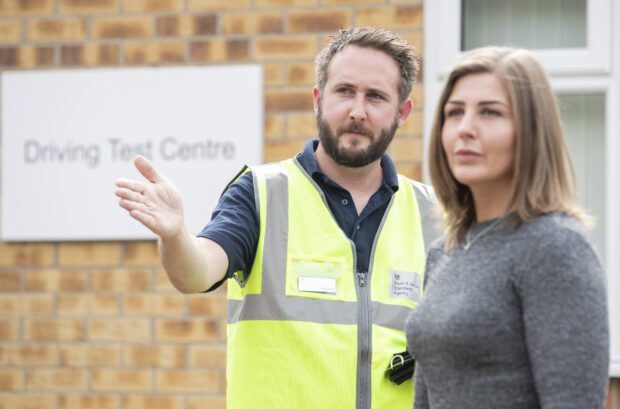
Over the last 2 years we’ve sent you letters, and emails to update you on what we are doing to reduce driving test waiting times.
I’m keen for us to continue to provide you regular updates on recovery and give you the opportunity to share your feedback on the actions we are taking, listen to any great ideas you have, and see the thoughts of other instructors.
You may have seen in this year’s business plan we have a target to reduce the national average waiting times car driving test from the current wait of 14 weeks to 9 weeks by the end of year.
Meeting this target is going to be a challenge as we currently have over 500,000 people waiting to take a car driving test. So, as ever, we continue to need your help and that of your pupils and our driving examiners (DEs) to achieve our target.
In this blog post I’ll update you on what we are doing to reduce driving test waiting times and tell you about the measures we are planning to take to help us to meet our target. This includes new and exciting things which I hope you and your pupils find useful to help prepare them for their driving tests.
Increasing the number of test appointments
As you know, we have already put in place many measures to increase the number of test appointments including:
- leave buy back for examiners that has increased test appointments by an estimated 13,000 since April 2021
- overtime, weekend and public holiday testing which has increased test appointments by an estimated 120,000 since April 2021
- additional tests carried out by those who do not normally conduct tests as part of their day job that has increased test appointments by an estimated 60,000 since April 2021
- tests conducted by recently retired examiners who have been invited back has increased test appointments by an estimated 4,000 since April 2021
- Tests conducted by examiners who have been recruited since April 2021 which has increased test appointments by an estimated 93,000
This has resulted in over 350,000 extra tests since April 2021 as a result of these measures.
Training course for new driving examiners
Our recruitment campaigns continue to be successful, but in some areas of Great Britain, we are struggling to recruit people. There are a number of challenges we face in trying to expand our DE workforce. Like many employers, we find that the jobs market is extremely competitive currently. The demographics of our current DE workforce mean that many colleagues have or are planning to retire in the near future. Therefore, whilst we have recruited a significant number of people, some of those numbers are replacing others who have left.
Our standards are challenging and this has meant that some of our new entrants are failing the driving examiner training course. Some have also left part way through the training, deciding that it’s not the role for them. Therefore we haven’t yet recruited enough additional resource to reduce driving test waiting times as quickly as we want to.
As we have moved through each recruitment campaign, we continually review and make changes and improvements to our recruitment and selection process and training courses. We are currently planning to pilot changes to the driving examiner course with the future trainees. The new course will focus more on the parts of the training that course participants have found to be more challenging including:
- standard setting for the initial driving standard assessment
- examiner training rather than driver training
We hope that these changes will help to increase the number of high quality, successful new entrants which will help us to reduce driving test waiting times even more quickly.
Recruiting additional examiners
We are also exploring options temporarily to contract in experienced driving assessors to qualify as driving examiners.
The Royal Society of the Prevention of Accidents (RoSPA) have offered to support us as we explore the feasibility of this opportunity.
We’ll keep you up to date on this area of work as it develops.
How we are using your feedback
Thank you if you made the time to respond to our consultation and the 6,381 of you who completed the ADI demand survey.
We received over 21,000 responses to the consultation and are still analysing the results.
We have analysed the results of the ADI demand survey and we plan to share these with you in the coming weeks. To inform our planning, we want to compare these with the previous results and design future ones consistently so we can continuously monitor the demand you face for lessons.
This means we will not include the results for the additional questions that were added to support the consultation when we report on the demand survey. The results for those questions will be in our announcement of the outcome to the consultation.
I also want to thank those of you who responded to the driving instructors’ National Associations Strategic Partnership recent survey on the use of ADI performance data. We will consider these results alongside the consultation feedback.
To get more information you can also read our blog post that explains how we use performance data to prioritise ADI standards checks and our engagement call.
Part 2 of this blog post will be published in the coming days, and will discuss the measures we’re taking to improve the success of pupils in the driving test.
#reducing #car #driving #test #waiting #times #Part #tests #examiners
Contains public sector information licensed under the Open Government Licence v3.0

